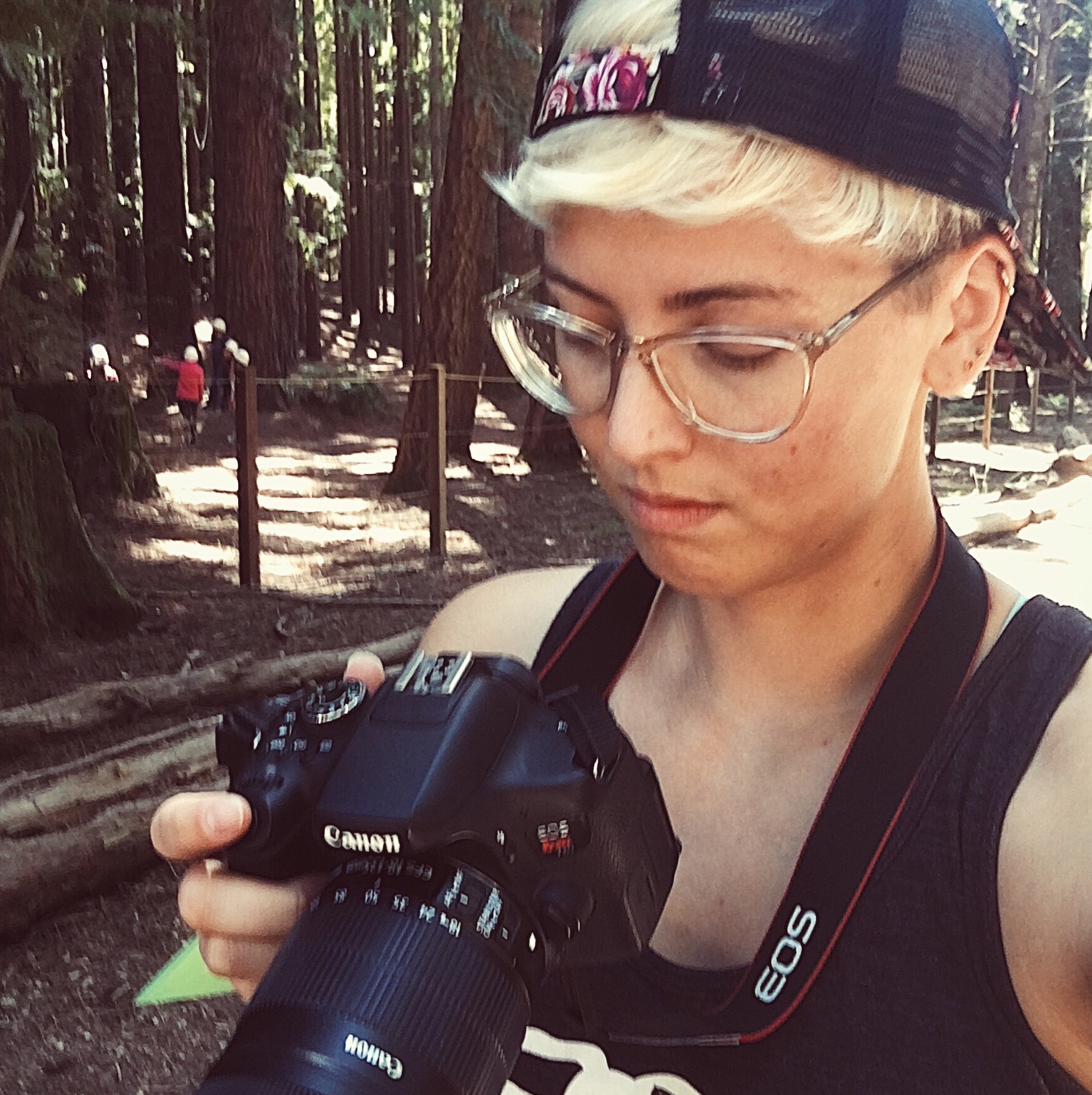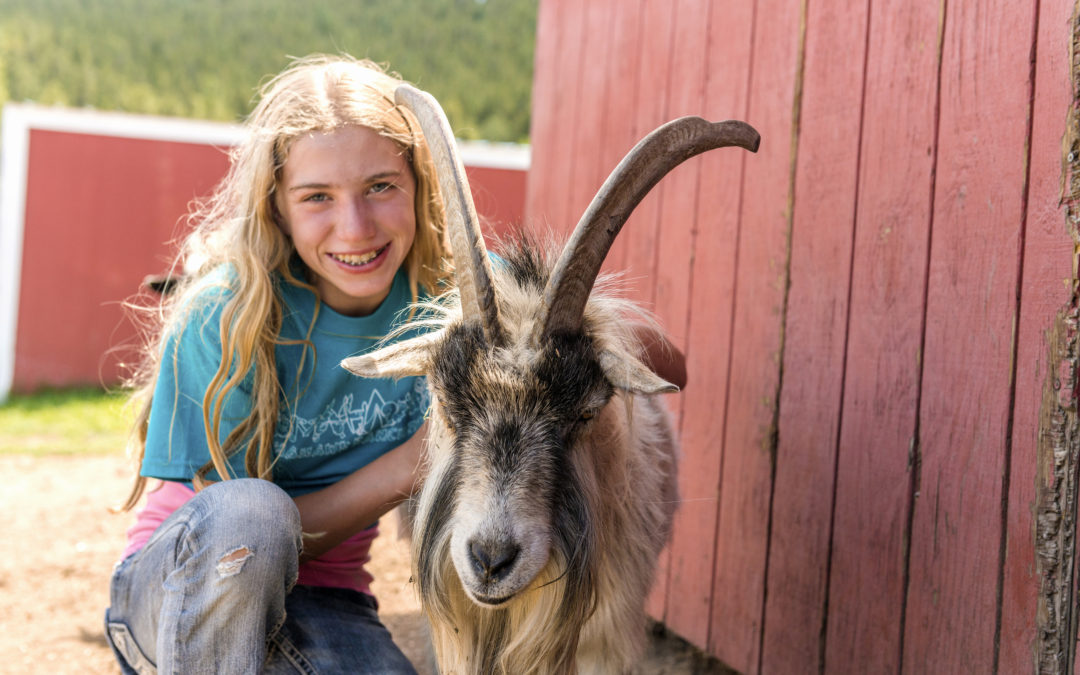Furred or feathered, small or large, animals make our lives a little more special. Girl Scout Animal badges are a fun way for your girls to learn more about these cute creatures and their wild cousins—how to care for them, their habits and behaviors, and what threatens their habitats. And since May is National Pet Month, there’s no better time for your girls to explore humans’ unique relationship and responsibilities towards our animal companions. To get you started, I’ve collected some animal-related activities and organized them by age level. Keep in mind many of the suggestions for older girls can be adapted to younger age levels (and vice versa) with a little troop leader creativity, and some can easily turn into a service project or Bronze award project.
Save it for later!
For Daisies
Connect with your Daisies’ wide-eyed wonder of the world and get them hands-on with animals. Take them to a park and have them observe the animals (and bugs) they see, noting or drawing how the animals interact with their environment. Or visit a working farm and learn about the different animals that provide us with food, clothing, and labor. Depending on the kind of animal-related activities you decide to do, your Daisies can work on multiple petals as they learn how to care for animals and themselves. From developing courage and confidence as they share their new knowledge to practicing considerate and caring interactions with animals, here are a couple of petal suggestions to get your girls started:

Friendly and Helpful Petal (Sunny)
Volunteer to walk dogs for senior citizens in your neighborhood. By assisting the elderly and making their animal companions happy, your girls will learn how to be both friendly and helpful. To polish your girls’ pet handling skills beforehand, invite a professional dog walker to teach them dog training and walking techniques, including how to be safe around dogs they do and don’t know, how to properly pet a dog, and how to handle a leash.

Make the World a Better Place Petal (Rosie)
Did you know approximately 6.5 million companion animals enter United States animal shelters nationwide every year? No matter how the animals arrived at the shelters, the good news is you and your troop can help these pets find their furever home. The Bay Area Pet Fair, hosted by Pet Food Express, is the largest annual pet adoption event in California! This year’s Pet Fair will be September 16 and 17 at the Alameda County Fairgrounds, and they are always looking for volunteers.
Helping out with Pet Food Express is a purrfect trip for Daisies to work on their 3 Cheers for Animals Journey, Bird Bath or Red Robin award, or even spark ideas for their Tula Take Action award. In addition, the event is an extravaganza for pet-loving families. Admission and parking is free, and there will be free live shows, free activities for kids and dogs, food trucks, lots of giveaways and loads of vendors. Want to get a head start on Brownie badge work? This event is great for incoming Brownies looking to work on their Pets badge!
For Brownies
Whether your girls already own a pet or hope to own one someday, your Brownies will benefit from the Pets badge as they learn how to pick the right type of pet for them and how to keep it happy and healthy.

Pets Badge
Find out what kind of care different pets need. Take a trip to the library with your troop and read up on pet care. Have each girl pick a pet to read about and note key features like the species’ size, diet, grooming, instinctive behaviors, and when they were first domesticated. Then have each girl share what they’ve learned—if you’re short on time, suggest that you each girl share one cool new fact she learned about the type of pet she chose. Want to keep your usual meeting place? Alternatively, check out a selection of pet care books from the library and bring them to a meeting for your girls to read and discuss. Have a more hands-on or active group? Arrange a field trip to a local pet store and have a pet caretaker talk to your girls about the different pets and proper pet care.
Keep a pet comfy and make pet bedding for your local animal shelter. There are plenty of step-by-step instructions on how to make pet beds and blankets online. And did you know shelters can use your empty Girl Scout cookie cases and boxes? Left unflattened, they provide cozy hideaways for bunnies, guinea pigs, cats, and are useful for dog training. Contact your local shelters to see which ones are in need of creature comforts, and get started!

Help a pet stay healthy and safe. If girls have pets at home, this can be as easy as reading a book on pet care guide and making sure their family is following pet protocols. For girls who don’t have pets at home, visit an animal shelter to learn more about the guidelines they follow to keep animals healthy and safe.
Make a pet feel loved. Did you know? Researchers say the love of an animal can improve our emotional health, so why not give back a little love. Cuddle with kittens at a cat café, craft handmade pet toys to donate to local animal shelter, or volunteer at an animal rescue to show the animals some love.
For Juniors
Have you ever held a sticky banana slug in your hand? Witness a sea otter crack open a tough shell with a rock? Or watch a grizzly bear lumber by? Chances are, if you have, it was at a nature center or zoo. Since these animals live in the wild, our interactions are often limited. But that doesn’t mean we can’t find out more about where they live, how they play, and how we can help them continue to survive!

Animal Habitats Badge
Learn about wild animals and investigate their habitats by taking a trip to your local nature center or zoo. Check out our GSNorCal’s Activity Finder to see if there’s an upcoming event with one of our awesome program partners – and you can always give them a ring to see what kinds of programs and learning opportunities they have for Girl Scout groups.
- San Francisco Zoo
- Oakland Zoo
- Lindsey Wildlife Museum
- Abby Sobrato Science and Sustainability Center
- Marine Mammal Center
- Marine Science Institute
- Turtle Bay Exploration Park
Create an animal house. Bird houses and dog houses are simple to make and there are an abundance of step-by-step instructions and designs available on the internet. Or try something different and build a bat house or bee house to give these key pollinators a safe place to rest.
Explore endangered habitats. Celebrate Endangered Species Day on May 19 by watching a documentary about endangered species and their ecosystems. Our Golden State has many strange but wonderful animals that need protection, like the California condor, burrowing owl, sea otter, and California tiger salamander. If your girls want to do more research, check out the full list of Threatened and Endangered Species of California on the Department of Fish and Wildlife site, and if you live near San Francisco, you’ll find this list (with pictures!) of Rare and Endangered Species in the San Francisco Bay Area useful.
Help protect animal habitats and participate in a park or coastal clean-up. A quick internet search for “beach/park clean-up YOUR CITY” is all you need to do to get started. Neighborhood organizations love having extra hands to help beautify local areas, and many California beaches put on organized beach clean-ups through the California Department of Parks and Recreation.
For Cadettes
For thousands of years, we have relied on animals to provide clothing, transportation, food, and agriculture, but today animals are also trained to help people with disabilities, find people who are lost, and even discover tumors. And, of course, animals offer us everyday creature comforts, like companionship, love, and sheer joy.

Animal Helpers Badge
Explore the connection between humans and animals. Research how humanity’s relationship with different animals have changed over the millennia. For example, modern dogs are descendants of wolves, and are the first known animal to be domesticated nearly 15,000 years ago to protect human encampments and help hunt!
Find out how animals help keep people safe by arranging a visit from a safety team that uses animals, like a local police K-9 unit, or a search-and-rescue team. Talk to the handlers to learn what kind of training and skills are needed to work with the animals. If you don’t have access to a safety team, have your girls read stories about animal heroes and share them with the troop. You can find plenty of news stories online about brave animals or check out books from your local library.
Learn how animals help people emotionally. Have them talk to a local vet or psychologist and find out how caring for a pet affects people’s emotional and mental health. Or interview some pet owners and ask how their pet helps them feel better. Get creative and capture their stories on video! You can even compile all your interviews into a short film to raise awareness in your community (just be sure you get their permission before you share it).
Discover how animals help people with disabilities. Talk to someone who trains or owns a service or support animals. Find out what’s involved in training the animal, and why that animal in particular is best suited for helping people in a certain way? According to the Americans with Disabilities Act, “a service animal means any dog that is individually trained to do work or perform tasks for the benefit of an individual with a disability, including a physical, sensory, psychiatric, intellectual, or other mental disability.” Even other animals like cats, horses, and pigs can be support animals as they provide companionship, relieve loneliness, and sometimes help with depression, anxiety, and certain phobias (though they are not considered service animals since they do not have special training to assist people with disabilities).
Dig a little deeper: As more kinds of animals are being trained to support humans, some people are questioning how and why these animals are selected, and where they are allowed to go (like airplanes and grocery stores). If you feel your girls are up to the challenge, have them investigate this issue and share their opinion in writing or artwork.
Look at how animals might help us in the future. Scientists observe and work with animals every day, hoping to find new ways to use their unique skills and abilities. Have your girls practice being scientists and conduct their own observation of an animal’s behavior, keeping a logbook of their observations for a week.
For Seniors
As consumers of beauty products, clothing, and chicken nuggets, and as pet owners, horseback riders, or circus spectators, our relationships with animals play a more active role in our lives than we realize. What are the nuances of the complex relationship between animals and humans? The Voices for Animals badge will help your Senior Girl Scouts better understand animal issues around the world and learn how to make informed choices—and hopefully help others make them, too.

Voice for Animals Badge
Find out more about domestic animals. Do you believe it is okay to declaw a cat? How about using a shock collar on a dog? What guidelines should be in place for a classroom pet? Work with your troop to look at city and state laws regarding domestic animals, and then work together to compose a pet’s rights document stating what you think it takes to treat pets ethically and respectfully.
Investigate animals used for science. There is an ongoing debate about whether animals should be used for product and medical testing, and some research facilities are more ethical than others. Track a beauty product that doesn’t state “cruelty-free” or “produced without animal testing” written on its label. Research how it was developed. Were animals used? If so, how? Make a visual timeline of your findings.
Look into an animal issue. Host a documentary watching party. Before the party, prepare discussion questions and a fact sheet about the particular animal issue the film focuses on. There are many available that bring attention to animals used for science, animals in husbandry, animals used for sports and entertainment, and policy decisions that affect animals. As with any media, documentaries will always have a bias, so if you have the time and resources, choose two films with opposing viewpoints and have a discussion at the end comparing the presented information.
Looking for more ways to earn your animal badges? Many shelters and humane societies put on programming specifically for Girl Scouts, so find a shelter in your area to see what they have to offer.
Do you have a favorite wildlife program or center in your area I didn’t mention? Did your troop do something super awesome that’s not on this list to earn their Animal badges? Tell us about it in the comments!

Ash Redfield—Ash is the Digital Marketing and Social Media Coordinator for Girl Scouts of Northern California, where they’re constantly planning, creating, and managing awesome content for social media. After graduating from Mills College (a women’s college in Oakland), Ash joined the Girl Scout movement where they love being part of a team that helps girls unlock their potential and continuing that legacy of women’s leadership. They have spent much of their life exploring Northern California, especially the Bay Area, so when not behind a blue-lit screen, you’ll probably find them hiking through a local park or at a café planning their next road trip.



My granddaughter is a member of Girl Scout Troop 1325 in Rock Springs, Wy. This last week she lost a mini rex doe rabbit trying have a litter. The first baby was too large to go through the birth canal and caused all 7 babies to suffocate. She is also a 4-H member taking dog, rabbit and sewing. She watched her grandpa do an autotopsy on the doe. Needless to say, there are probably not very many girls that could stomach this procedure. Is there a Girl Scout badge for vet science. It would mean a lot to her and her family if she were to get this badge. She also went to school the next day in good spirits. Her mother called the school and advised them what happened. The office told the school counselor what happened.
My granddaughter is a member of Girl Scout Troop 1325 in Rock Springs, Wy. This last week she lost a mini rex doe rabbit trying have a litter. The first baby was too large to go through the birth canal and caused all 7 babies to suffocate. She is also a 4-H member taking dog, rabbit and sewing. She watched her grandpa do an autopsy on the doe. Needless to say, there are probably not very many girls that could stomach this procedure. Is there a Girl Scout badge for vet science. It would mean a lot to her and her family if she were to get this badge. She also went to school the next day in good spirits. Her mother called the school and advised them what happened. The office told the school counselor what happened.